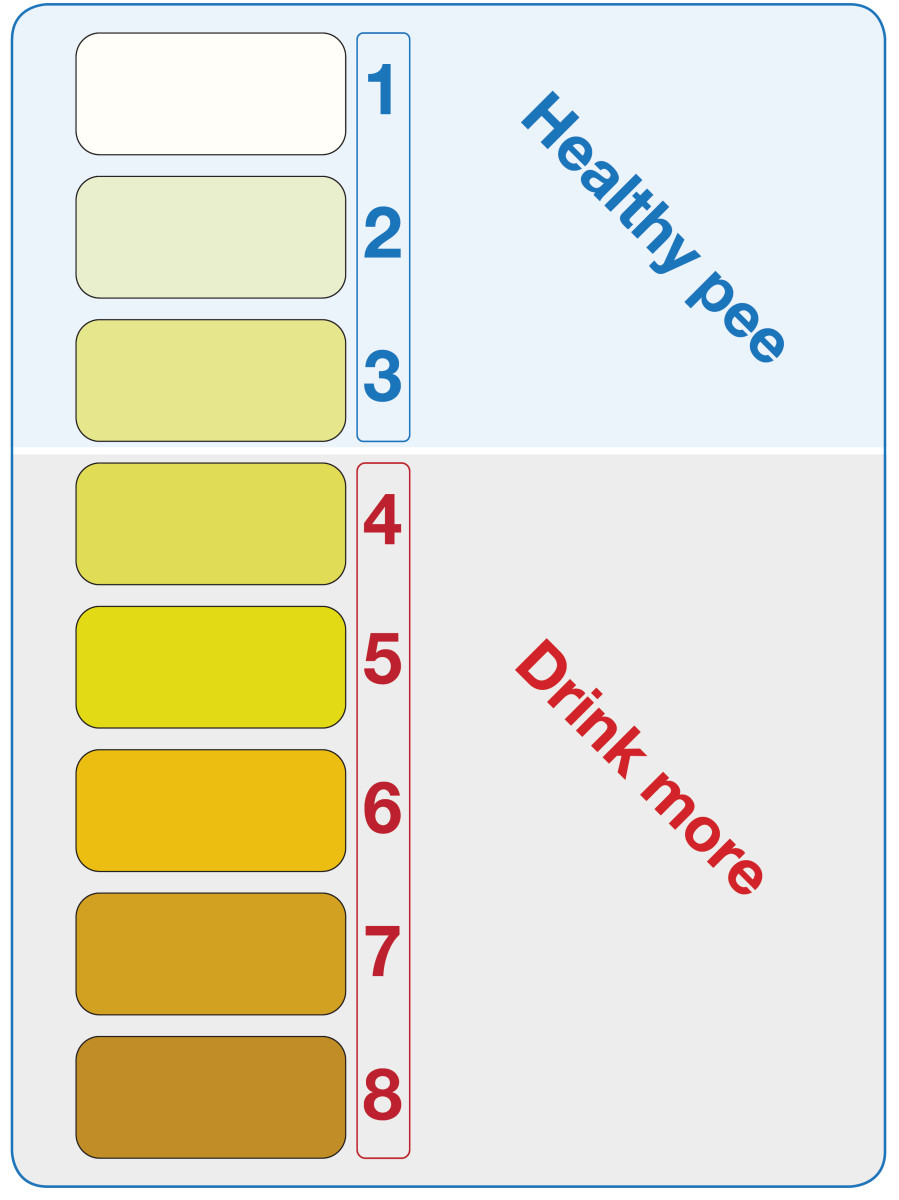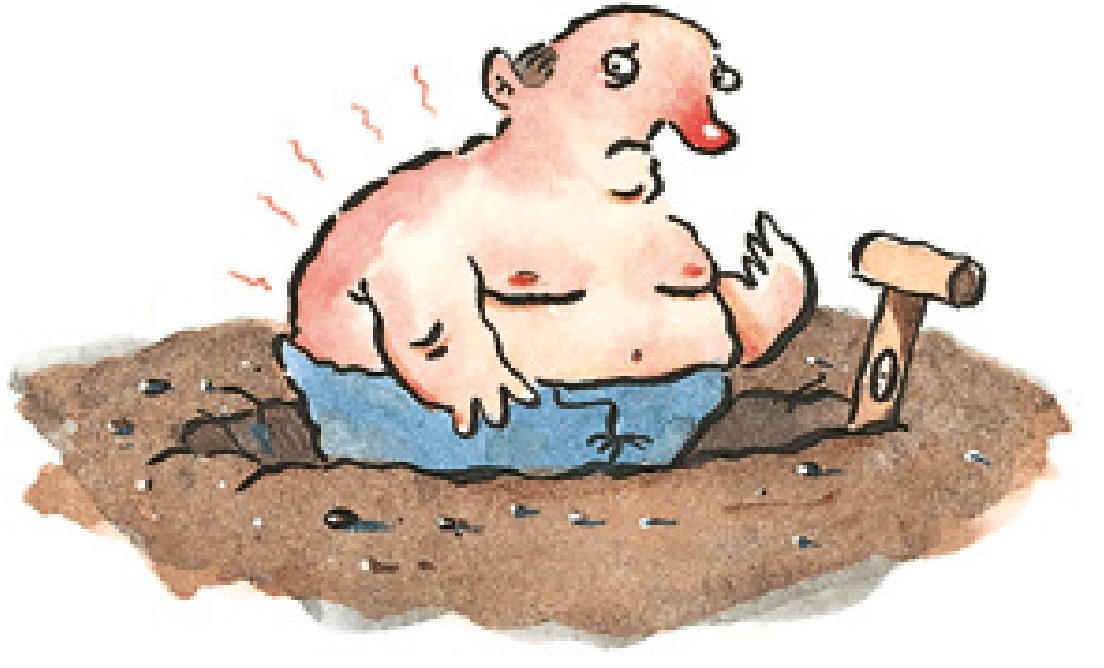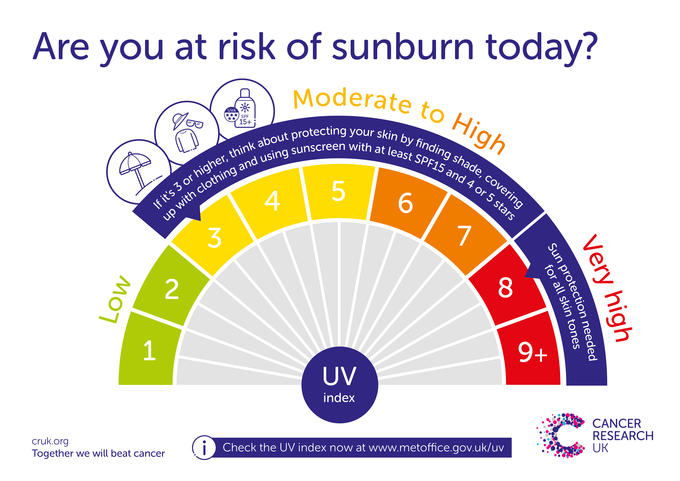Is it Too Hot or Cold to Work?
Working in Hot Temperatures
There's no law for maximum working temperature, or when it's too hot to work because every workplace is different.
No meaningful upper limit can be imposed because in many indoor workplaces high temperatures are not seasonal but created by work activity, for example in bakeries or foundries.
However, employers must stick to health and safety at work laws, including:
- Keeping the temperature at a comfortable level
- Providing clean and fresh air
Indoor Workplaces
You should provide:
- A reasonable working temperature in workrooms – usually at least 16°C, or 13°C for strenuous work
- Local heating or cooling (using fans, opening windows, using radiators) where a comfortable temperature cannot be maintained throughout each workroom, such as in hot and cold manufacturing processes
- Rest facilities where necessary, eg for hot work or warm clothing in cold stores
heating systems which do not give off dangerous or offensive levels of fume into the workplace
Outdoor Working
When working outdoors, the weather can have a serious impact on workers’ health if the risks have not been properly managed.
This impact may be immediate or occur over a longer time, leading to conditions like skin cancer.
The weather can also affect a worker’s ability to keep safe, for example when handling machinery.
There are simple actions you can take to protect people working outdoors.
Working in the Sun
Too much sunlight can cause skin damage including sunburn, blistering and skin ageing. In the long term, it can lead to an increased risk of skin cancer.
Hot Environments
- Reschedule work to cooler times of the day
- Provide more frequent rest breaks and introduce shading to rest areas
- Provide free access to cool drinking water
- Introduce shading in areas where people are working
- Encourage workers to remove personal protective equipment when resting to help encourage heat loss
- Make sure workers can recognise the early symptoms of heat stress
What is Heat Stress?
Heat stress happens when the body's way of controlling its internal temperature starts to fail. As well as air temperature, factors such as work rate, humidity and work clothing may lead to heat stress.
You and your workers must be aware of how to work safely in high temperatures. This means identifying the factors that can cause heat stress, and how to avoid it.
A Typical Heat Stress Situation
Someone wearing protective clothing and doing heavy work in hot and humid conditions could be at risk because:
- Sweating is restricted by clothing and humidity
- Body heat increases due to work rate and, so core body temperature rises
- The body reacts by producing more sweat, which may cause dehydration
- Heart rate also increases, putting more strain on the body
Symptoms of Heat Stress
Heat stress can affect people in different ways, and some are more likely to suffer it than others.
Typical symptoms are:
- An inability to concentrate
- Muscle cramps
- Heat rash
- Severe thirst – a late symptom of heat stress
- Fainting
- Heat exhaustion – fatigue, dizziness, nausea, headache, moist skin
- Heat stroke – hot dry skin, confusion, convulsions and eventual loss of consciousness. This can result in death if not detected at an early stage
How Can I Reduce the Risks?
Remove or reduce the sources of heat where possible.
Control the Temperature
Control the temperature using engineering solutions, for example:
- Change the processes
- Use fans or air conditioning
- Use physical barriers to reduce exposure to radiant heat, for example, machinery
Limit Work Rate and Length of Exposure
Provide mechanical aids where possible to reduce the work rate.
Regulate the length of exposure to hot environments by:
- Only allowing workers to enter the workplace when the temperature is below a set level or at cooler times of the day
- Issuing permits to work that specify how long people should work in situations where there is a risk
- Providing periodic rest breaks and rest facilities in cooler conditions
Prevent Dehydration
Working in the heat causes sweating which means losing vital water that must be replaced. Provide cool water in the workplace and encourage workers to drink it frequently and in small amounts.
If it is not possible to drink while working, for example during asbestos removal, encourage workers to drink before and after the work to avoid dehydration.
What are the signs and symptoms of dehydration?
Dark and strong-smelling urine is a clear sign that you need to drink more fluids

Use the above urine colour chart to check for signs of dehydration.
Healthy pee is 1-3
MUST HYDRATE is 4-8.
Other symptoms of dehydration include:
- Pain when urinating (UTIs)
- Dry mouth, lips or eyes
- Thirst
- Dizziness
- Headaches
- Tiredness
- Lack of concentration
If dehydration is left untreated, it can become severe. Severe dehydration is a medical emergency and requires immediate medical attention.
Symptoms of severe dehydration include:
- Feeling unusually tired (lethargic) or confused
- Not passing urine for eight hours
- A weak pulse
- A rapid pulse
- Fits (seizures)
- A low level of conciousness
- If severe dehydration is not treated immediately it can lead to complications such as secondary UTI symptoms (e.g E. coli bloodstream infections similar to sepsis) and falls due to dizziness.
- Severe dehydration can be life-threatening, particularly for older people.
How to Reduce the Effects of Dehydration
- Encourage workers to frequently drink cool water (rather than tea, coffee or carbonated drinks)
- It is better to drink in small amounts to compensate for the effects of sweating
- Do not rely on workers saying they are thirsty. It is not a good indicator of dehydration, more an early sign that they are starting to suffer from its effects
When working at a high rate in heat stress conditions, workers should drink around - 250 ml (half a pint) every 15 minutes
- If you have workers exposed to heat stress conditions, encourage them to be adequately hydrated before they come to work
Where Ability to Drink is Restricted
Some situations make it harder for workers to drink, for example if they are wearing personal protective equipment (PPE).
In these situations you could encourage workers to drink:
- 500 ml (a pint) of water per hour before work starts
- The same amount during their rest periods
- If water loss is significantly greater through increased sweating, then they should increase the amount they drink proportionately.
Even if workers replenish lost sweat with equal amounts of water, they may still be dehydrated due to lost salt from the body. It is therefore a good idea to have drinks that contain the salts needed.
Good hydration prevents:
- Urinary tract infections (UTIs)
- Headaches
- Constipation
- Dizziness that can lead to falls
- Confusion
- Kidney stones
- Pressure ulcers/skin conditions
- Poor health
Keep Your Top On

What are the risks?
Skin cancer is one of most common forms of cancer in the UK. Too much exposure to UV radiation from the sun can cause skin damage including sunburn, blistering, skin ageing and in the long term could lead to skin cancer. Those with a family history of Skin cancer (and those with pale skin/ fair hair) may be more at risk.
Abnormal Reactions to Sunlight
Some medicines, contact with some chemicals used at work (such as dyes, wood preservatives, coal tar and pitch products), and contact with some plants, can make your skin more sensitive to sunlight. Your works doctor or family doctor should be able to advise you further.
Simple Advice for Outdoor Workers
- Keep your top on! Cover up by wearing appropriate clothing
- Stay in the shade whenever possible, especially during breaks
- Use a high-factor sunscreen (at least SPF15
Watch for symptoms that include:
- appearance of new moles or spots, changes to shape, size, colour of moles and spots or if they itch or bleed (seek medical advice)
- Drink plenty of water to avoid dehydration
Sun Safety Guidelines
In the UK, the sun’s ultraviolet (UV) rays are the strongest between 11am and 3pm from mid-March to mid-October. During this time, the sun may be strong enough to cause damage. Take extra care to protect your skin, especially if you get sunburnt easily by:
Spending time in the shade, especially between 11am and 3pm in the UK.
Covering up with clothes, a wide-brimmed hat and UV protection sunglasses.
And using a sunscreen with at least SPF15 and 4 or 5 stars. Use it generously, reapply regularly and use together with shade and clothing.
The Sun Moves
Remember that the sun moves across the sky throughout the day, and shadey spots move with it. Be sure to check where the shade is so that you’re still protected.
The Weather
Even on cloudy or foggy days you can still get sunburned. Up to 80% of UV rays pass through cloud or mist, so be sure to still find shade, cover up and use sunscreen on the areas you cannot cover.
Clothing
Clothing should cover your shoulders and have long sleeves. The more skin that’s covered by your clothing, the better the protection.
- Choose clothing that’s loose-fitting and darker in colour
- Look for materials with a close weave- as a guide you can hold the material up to the light to check you can’t see through the fabric
Sunglasses
Sunglasses can protect your eyes from UV rays. When choosing sunglasses look for one of the following:
- 'CE Mark' and British Standard
- UV 400 label and 100% UV protection written on the label or sticker
- Protection at the side of the eye, for example, wraparound styles, sports glasses or bigger sunglasses
Sunscreen
Sunscreen doesn’t protect us completely from sun damage on its own. However, it can be useful for taking care of the parts of skin we can’t shade or cover. This is why we recommend using sunscreens together with shade or clothing.
We recommend buying sunscreens with a:
- Sun Protection Factor (SPF) of at least 15 (UVB protection)
- High star rating with 4 or 5 stars (UVA protection)
- UVA protection can also be shown by the letters ‘UVA’ in a circle. This means that it meets the EU standard.
No sunscreen, no matter how high the factor, can provide 100% protection. Sunscreen shouldn’t be used to extend your time in the sun, and it doesn’t make tanning safe. In fact, you could be more likely to get sun burn and skin damage if you use sunscreen to sunbathe.
The UV Index and Sunburn Risk
The UV index tells us how strong the sun’s UV rays are and when we might be at risk of burning. The higher the value, the greater the risk of sunburn and the less time it takes to damage your skin.
When the UV Index is 3 or more, the sun is strong enough to cause damage for some skin types so take care and protect your skin, especially if you burn easily.

UV Ratings Explained
UV 1-2
Low exposure. No sun protection needed.
UV 3-5
Moderate exposure. Think about sun protection, especially between 11am-3pm.
UV 6-7
High exposure. Skin protection needed for most skin tones.
UV 8-9+
Very high exposure. Skin protection needed for all skin tones.
When is the Sun the Strongest - the Shadow Rule
Another handy tip to help you work out when the sun is strong is the ‘shadow rule’. It’s simple and it works anywhere in the world. It’s also a fun way to talk to children about enjoying the sun safely.
Look at your shadow and if it is shorter than your height this means that the sun’s UV rays are strong. So that’s when you’re more likely to burn and need to take care and protect your skin, especially if you get sunburnt easily.
Who’s at Risk of Sunburn?
Sunburn, just once every two years can triple your risk of melanoma skin cancer. Anyone can get sunburnt or develop skin cancer, but some people are at a higher risk and need to take more care in the sun.
You should take more care in the sun if you have one or more of the following:
- Skin that burns easily
- Light or fair coloured skin, hair, or light coloured eyes
- Lots of moles or freckles
- A history of sunburn
- A personal or family history of skin cancer
You’re the best person to know how your skin reacts to the sun. The more easily you get sunburnt, the more careful you need to be. Remember, you don’t need to peel – if your skin’s gone red, pink, itchy or tender in the sun, that’s sunburn.
Do People with Dark Skin get Sunburnt?
People with naturally dark or brown skin burn less easily and have a lower risk of skin cancer. But people with darker skin can still burn – it might feel itchy or tender rather than changing colour. And people of all skin tones can get skin cancer.
Am I at Risk of Sunburn Today?
Although 11am to 3pm is when the sun’s UV rays are strongest in the UK, this can differ depending on where in the world you are. Always check the UV index to find out how strong the sun is on any given day.
Tips for Using Sunscreen Properly
It's important to use it properly to get the level of protection it says on the bottle:
- Make sure you put enough on – people often put on much less sunscreen than they need to.
- Apply sunscreen evenly and thickly.
- Make sure that you’re putting enough on if using a spray or roll on sunscreen.
- Reapply sunscreen regularly throughout the day including ‘once a day’ and ‘water resistant’ products.
- Sunscreen can rub, sweat or wash off – even if it’s supposed to be waterproof. It’s especially important to put more on after toweling dry.
- Reapplying also helps avoid missing bits of skin.
- Check the expiry date on your sunscreen before you use it. Look for a symbol with the letter M and a number that shows how many months the sunscreen will last after opening.
Does the Brand of Sunscreen Make a Difference?
No. It doesn’t matter which brand you buy, so long as you choose one with at least SPF15 and 4 or 5 stars.
Sun Safety for Children
Sun safety is important at all ages. Protect children’s skin using a combination of shade, clothing and sunscreen.
Encourage them to spend time in the shade particularly between 11am-3pm when the sun is strongest, you can read more about this in the above section.
Covering skin with clothing helps to reduce UV rays reaching the skin, perhaps wearing a t-shirt in the paddling pool or a hat when at the park. Remember sunglasses and hats are a great way to protect the eyes and face, too.
Sunscreen doesn’t protect us completely from sun damage on its own. However, it can be useful for taking care of the parts of skin we can’t shade or cover. Apply it regularly and use a sunscreen with a minimum SPF 15 and a 4 or 5-star rating.
Children and teenagers might need a reminder or a helping hand but setting a good example yourself is a great way to help them learn good habits. The NHS recommends that children under 6 months should be kept out of direct sunlight.
The information within this article was collected from the following sources:
Need some health and safety advice?
Book a free no-obligation consultation with one of our Health & Safety consultants today


 Pricing Plans
Pricing Plans